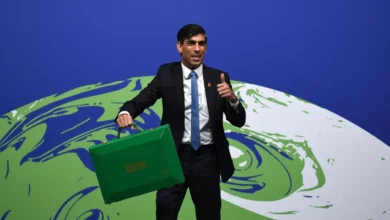
After a year of controversy, April 2016 saw the temporary export ban lifted on the 4500-year-old ancient Egyptian statue, "Sekhemka", sold in 2014 for £15.76m sterling to an anonymous Qatari Millionaire in an auction at the Britain’s Museum of Northampton.
The painted limestone statue of a royal scribe is known to be the tomb statue depicting a high official. The 75 cm tall figure, wearing a Shendyt skirt and fitted wig, holds a partly unrolled papyrus on his knees, upon which a list of offerings are etched. His wife Sit-Merit is depicted kneeling at his feet.
The lifted ban signals the defeat of the Egyptian government, historians and international community in trying to stop the priceless artifact being passed from British to Qatari hands.
“It is a real shame that Sekhemka is leaving the UK and will in all likelihood never be seen by the British public again,” said Sharon Heal, director of the British Museums Association (MA), according to a statement published on the MA website.
Heal condemned the sale as "unethical", saying that the Northampton Borough Council (NBC) has disappointed many people by selling this important statue for short-term monetary gain. She underlined that the NBC will be excluded from funding opportunities in the future as a result of their actions.
The MA has already suspended the Museum of Northampton's membership of the Association for a minimum period of five years, on principle of the auction having been a “clear violation of public trust”.
The museum's attempts to sell Sekhemka began in 2012, when an initial proposal the sell the royal scribe provoked a wave of anger in the UK, following which the process was forcibly stopped.
But in July 2014 the museum went ahead with the auction of the statue, allegedly to gain funds for the museum's expansion. While outside the auction hall angry demonstrators declared that "heritage" should never be sold for personal interests, inside, the statue was sold for £15.76m to an anonymous Qatari millionaire.
Many stories have been circulated about how the statue came to be taken from Egypt, and questions concerning its legality are still raised.
According to one story, Sekhemka left the country in 1849 and was bought by the Marquess of Northampton. The Maquess' son later donated the statue to the Museum of Northampton.
The Egyptian Ministry of Antiquities (EMA) claims the statue left the country legally in 1866, however there is no written evidence to suggest that an institution protecting antiquities existed during the period. In truth, it appears that the exportation and trade of artifacts was legal — and indeed commonplace — at the time.
“The UNESCO agreement which prohibits the importation, exportation and transfer of cultural properties was set down in 1970 and can neither be applied retroactively, nor to settle past disputes,” the EMA said.
A plan to “save Sekhemka statue” was shared between Egypt and Britain, the well-known archaeologist Robert Moore launching a petition on Facebook called “Save Sekhemka Action Group” to stop the sale of the statue. Numerous lawsuits were also filed against the offending museum.
Meanwhile, in Egypt the government initiated a fund-raising campaign, aiming to either raise £15.8 million to reclaim the statue for the Egyptian people or to find a buyer willing to purchase the statue from its Qatari owner.
At a news conference in Los Angeles, former Antiquities Minister Zahi Hawass declared the selling of Sekhemka a "crime" and requested a sanction on David Kennedy the chief executive of the British Museum. He called on the Egyptian government to prevent the sale of this precious relic of the Egyptian Old Kingdom. He also urged intellectuals from the international community to sign a document banning the sale of the statue.
Drawing on a similar example, Hawwas described how intellectuals of the international community signed a document backing his objection to the placement of a Nefertiti bust on a bronze base in the Egyptian Museum of Berlin, on the premise that this would damage the bust. The director of the museum agreed to the objection as a result of the document.
As the public heaped pressure on the Sekhemka debate, the British Ministry of Culture responded issuing a temporary export ban until July 2015, then deferred it to 29 March 2016.
“With no competing offer and the deadline having passed, the statue will regrettably now be transported abroad to its Qatari owner,” Shaaban Abdel-Gawad, director general of the Department of Recovered Antiquities at the Ministry of Antiquities, told state agency MENA on Saturday.
Gunilla Loe, spokesperson for the "Save Sekhemka Action Group", told MA that they believe the anonymous owner to be a private individual rather than a reputable museum.
“We feel that in the latter case the ban would either have been lifted sooner or some sensible solution with a British museum would have been found,” she said.
Egyptologist Ahmed AlFayed told Egypt Independent,“I won't judge the situation or talk about the problem; it is what it is. What I will do is talk about possible solutions. The statue is in Qatar now, which might make it complicated to get back, but nothing is impossible. The government could launch a campaign on TV calling on Egyptian Businessmen to bring the statue back to home," he suggested.
Aside this, AlFayed believes the Sekhemka debate should inspire the young Egyptians of today to take care of the antiquities of yesterday. He told Egypt Independent that the government should raise awareness among young Egyptians and guardians of archaeological sites about the value and importance of their heritage. If the coming generations do not grasp the importance of their heritage, warned the Egyptologist, statues will continue to be sold at auctions and historical sites treated badly. "If this continues, future generations will not have anything left to be proud” he said.




